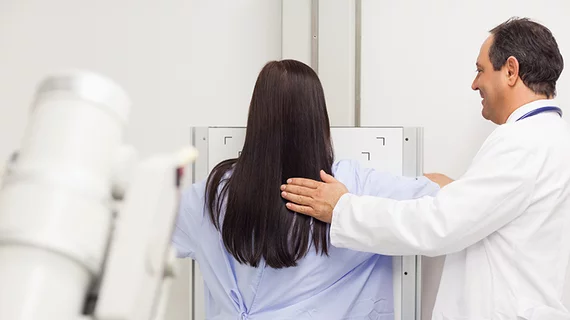Mammography disparities found among black, Hispanic women
While early screening and detection can play an important role in preventing breast cancer, new research from Mayo Clinic shows that some women, particularly minority women, aren’t being screened as often as their white counterparts.
The findings from the study, published Dec. 16 in the Journal of the American College of Radiology, are disturbing to researchers looking for ways to reduce the number of women being diagnosed with the cancer. More than 230,000 women will be diagnosed with invasive breast carcinoma this year and more than 40,000 will die because of it, according to the research.
Of the more than five million women patients in the study, 43 percent were white, 33 percent were black, 17 percent were Hispanic and 6 percent were Asian/Pacific Islanders.
Results showed that there were no significant differences between mammography utilization between whites and Asians/Pacific Islanders, but there were significant differences between whites, blacks and Hispanics. Black and Hispanics are screened at much lower rates than their white counterparts.
Other research has shown that minority women often die more of breast cancer because they get screened too late, after the cancer has already progressed. Early detection can decrease the chance of death by 20 percent, said Ahmed T. Ahmed, the lead author on the study and a postdoctoral fellow at the Mayo Clinic, in an interview with Radiology Business. Unfortunately, multiple races of women are not getting the care they need, he said.
“The racial disparity is very complex, and there is no one cause or factor,” Ahmed said. “Access to healthcare itself is a big issue.”
Some of the major factors include socioeconomic status, insurance coverage and location, but other, smaller factors like culture, language barriers and religion come into play, too, Ahmed said.
For example, it is not widely accepted for Muslim women to receive breast exams and mammograms, resulting in a community of women who are not routinely screened and treated for breast cancer, Ahmed said.
Though some organizations do what they can to help fill disparities, they could often be doing more. Understanding and engaging communities based on what they need and who they are can be a pivotal move in giving them resources to receive routine healthcare, Ahmed said. Existing initiatives involve telephone coaching and helpful website modules.
“They look at the culture and racial differences, and then they address that,” Ahmed said. “Knowing the community is the main thing. If you know them, engage with them and they know you, they would be more comfortable and compliant for screening, which would decrease health disparities.”
One way providers can improve access to mammograms is by bringing portable mammography tools to underserved communities.
“We have to start collaborative work between stakeholders, patients, leadership and providers,” Ahmed said. “It should be done more broadly and cover more areas, especially the areas that have minority women.”

